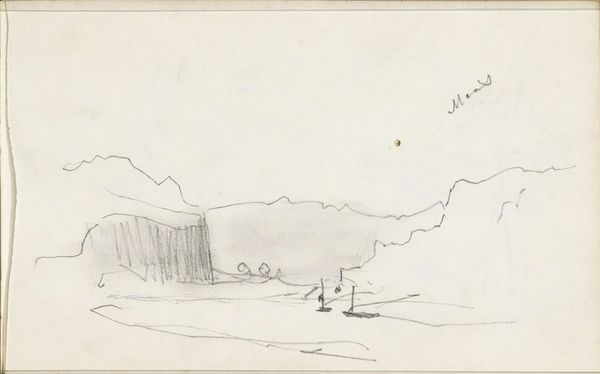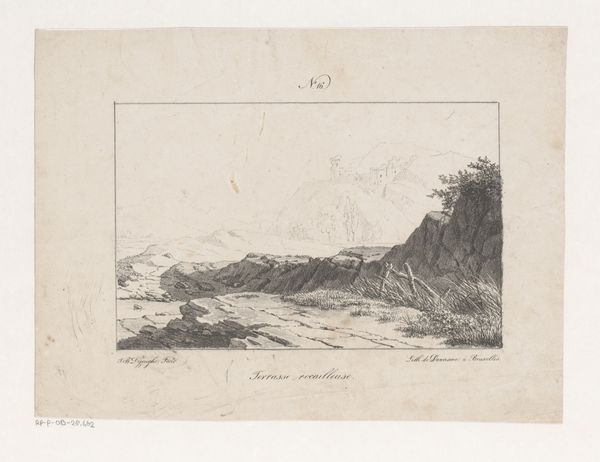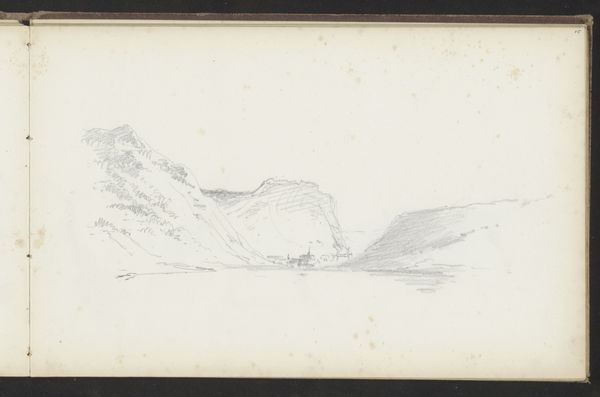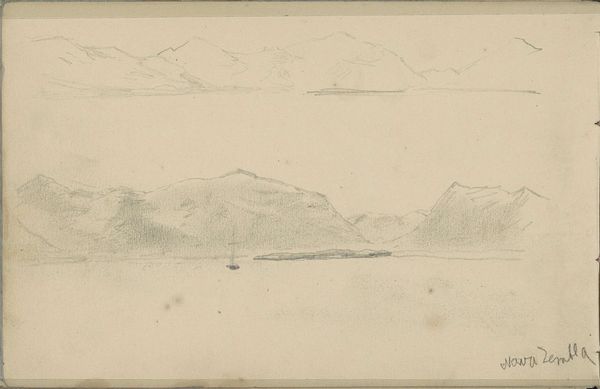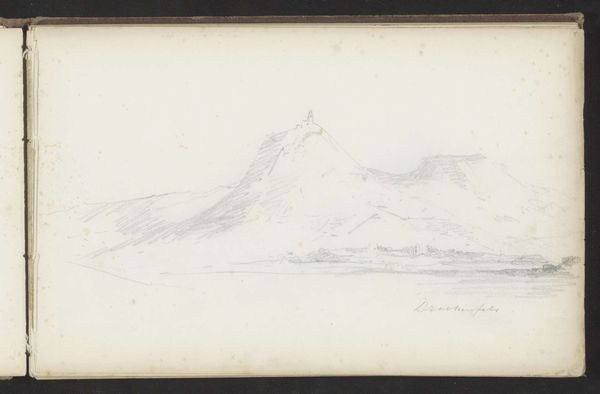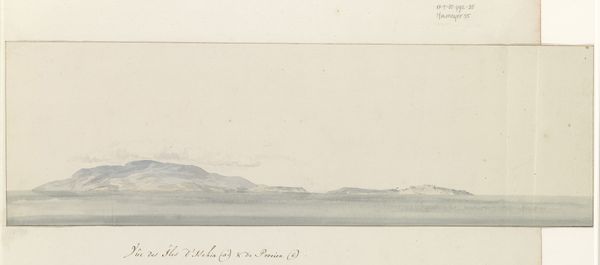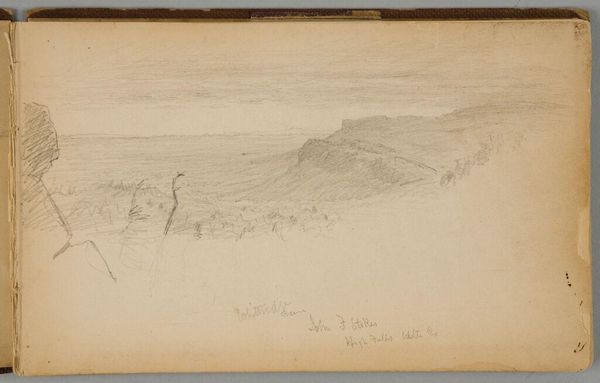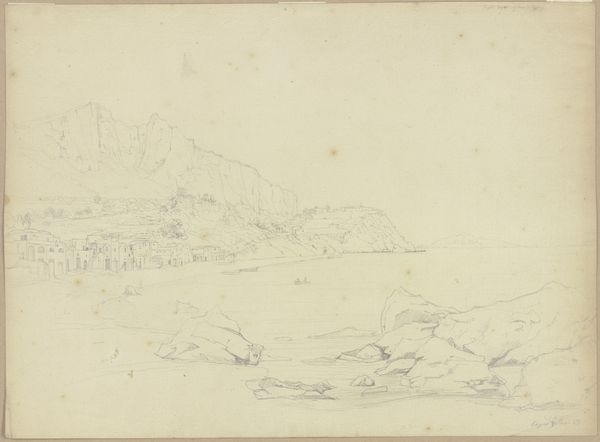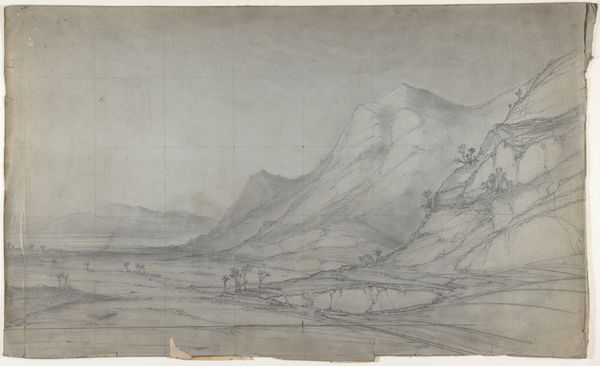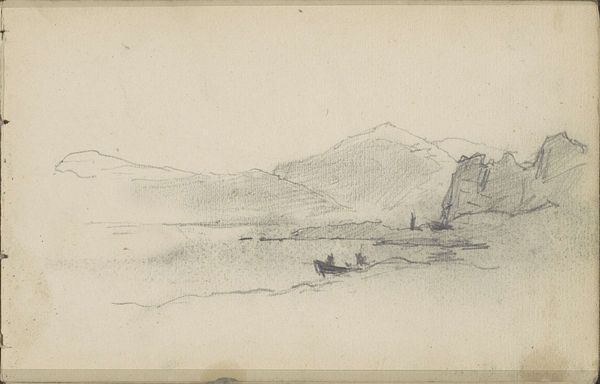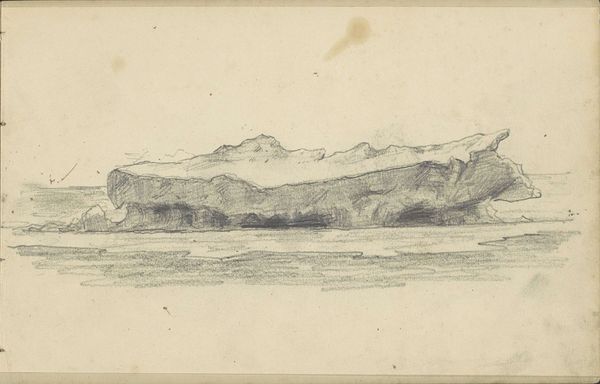
Copyright: Public domain
Editor: This is Nicholas Roerich's "Figures in a Landscape," created in 1919 using pencil. It's a relatively small drawing, and I’m struck by how simple the composition is, yet it evokes such a feeling of vastness and isolation. What’s your interpretation of this seemingly barren landscape? Curator: Considering the socio-political landscape of 1919, in the aftermath of World War I and amidst the Russian Revolution, this landscape could be read as a reflection of the upheaval and uncertainty of the time. Roerich’s choice of such a desolate landscape might symbolize the perceived barrenness of society. The figures seem huddled together almost for survival. Does that resonate with you? Editor: That's fascinating. I hadn't considered that connection. The figures, so small against the backdrop, definitely emphasize a sense of vulnerability, perhaps suggesting a community seeking solace in a tumultuous era. Do you think the work might also hint at a hope for rebirth or rebuilding? Curator: It's plausible. Roerich was deeply interested in spirituality and the East. The starkness could also signify a cleansing, a necessary stripping away before a new spiritual or social order emerges. Are there elements within the composition that strike you as conveying that sense of hope? Editor: Perhaps the distant mountain peaks, untouched by the immediate desolation below, symbolize something enduring and permanent. Or maybe I’m just being optimistic. Curator: The beauty of art lies in its ambiguity and its power to evoke varied interpretations across time. Examining art through the lens of historical context gives us invaluable insights. Editor: Absolutely! I appreciate understanding the layers beneath the surface; it truly enhances my appreciation for Roerich’s art.
Comments
No comments
Be the first to comment and join the conversation on the ultimate creative platform.
